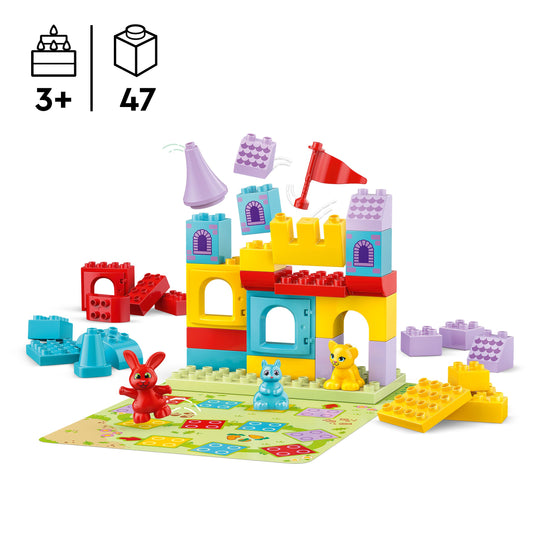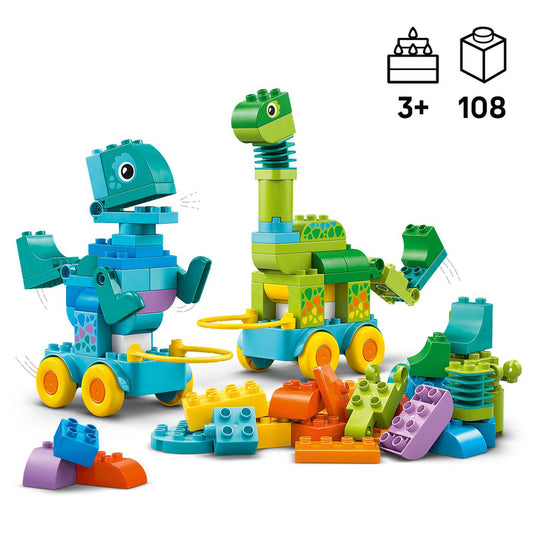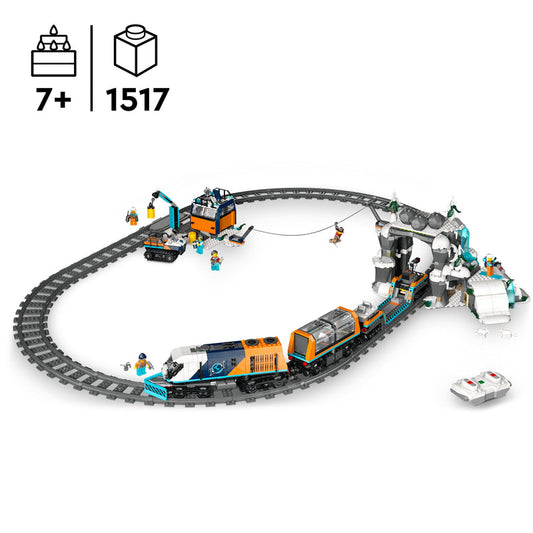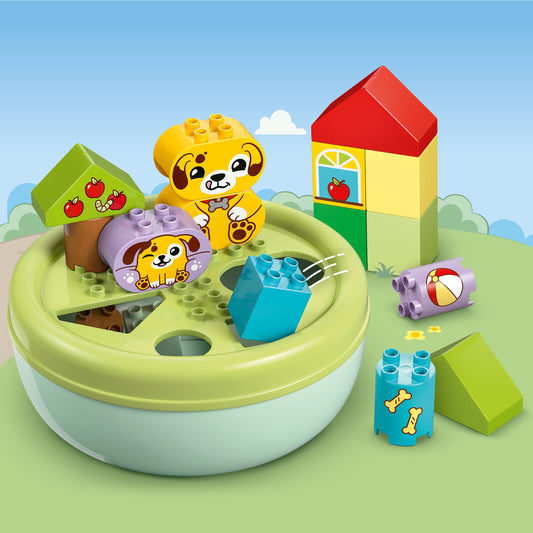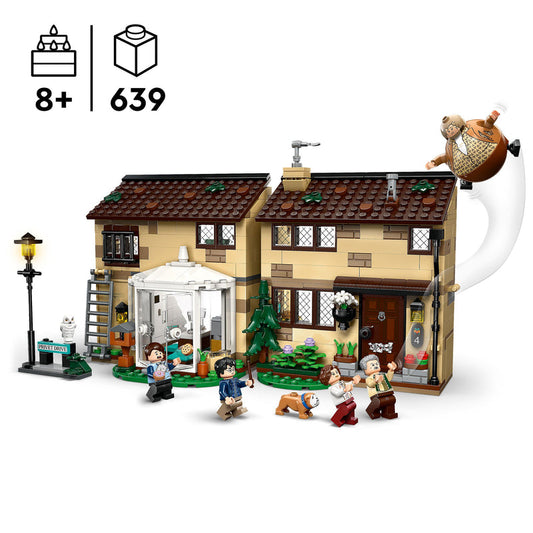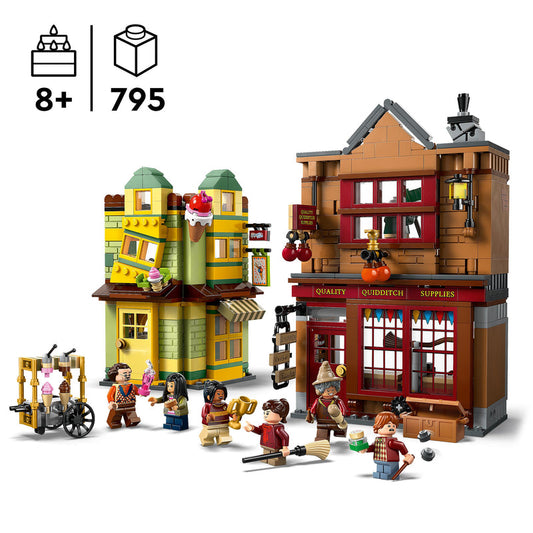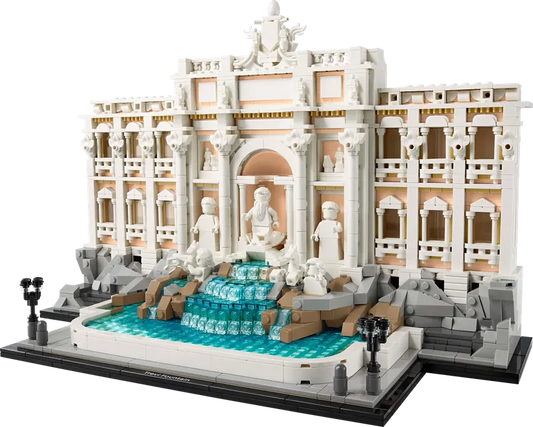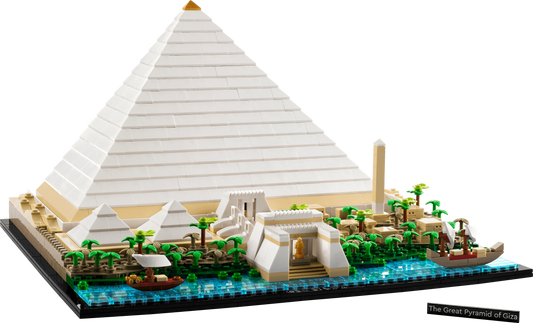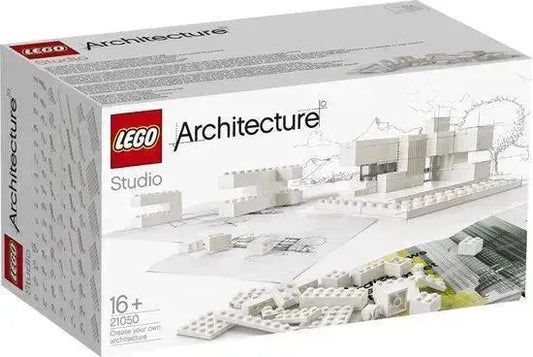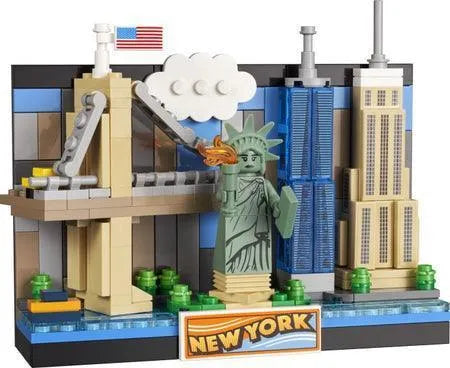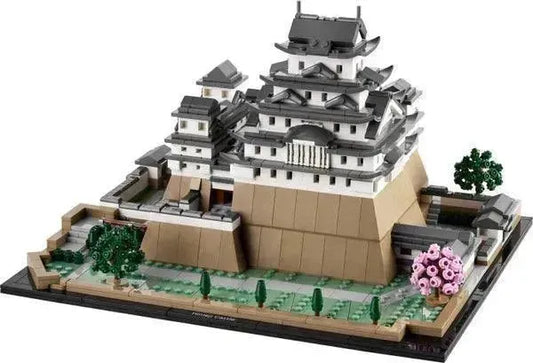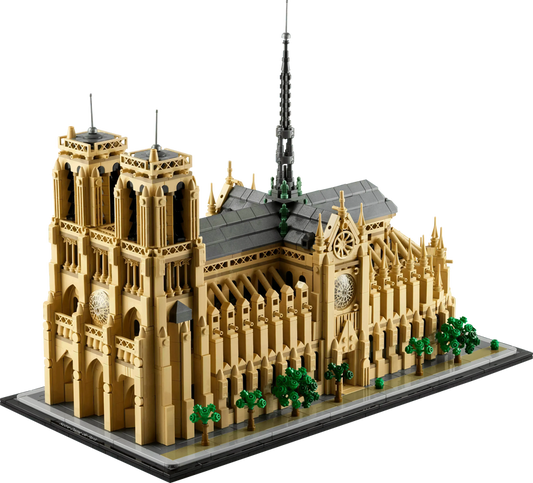How is LEGO made?
We are often asked "How are LEGO® bricks made?"
The trucks arrive It all starts with small chunks of plastic in many different colors, called granules. Trucks full of granules drive to the LEGO factory, where giant hoses suck up the granules and dump them into three-story metal silos.
There are 14 silos, and each silo can hold up to 33 tons of granulate. From the silos, the plastic granulate goes through tubes to the injection molding machines. The temperature rises In the injection molding machines, the granulate is heated to a temperature of approximately 230 degrees Celsius (450°F). The melted plastic slurry is injected into casting molds, small metal containers in the shape of hollow LEGO bricks.
Think of a very complicated version of the ice cube mold at home in the freezer. The injection molding machine applies hundreds of tons of pressure to ensure that the stones are formed with perfect precision. They are then cooled and removed from the mold; that only takes about 10 seconds.
Robots lend a helping hand Due to the dangerous conditions and the required precision, the molding process is almost completely automated. The finished stones roll into boxes via conveyor belts.
When a box is full, the molding machine sends a radio signal to one of the robotic trucks that drive through the factory hall. The robot trucks are guided through slots in the floor.
They pick up the full boxes and place them on another conveyor belt, which takes them to the next step in the manufacturing process. Time to decorate What would our stones be without all the cool details and decorations?
The next step in the manufacturing process is the assembly hall, where the details are printed and multi-piece parts are assembled. Faces, control panels, numbers, words and other decorative details are stamped on the stones by a giant printer. Some LEGO® parts, such as the legs of the minifigures, consist of different pieces that fit together.
These complicated pieces are clamped together by machines that apply pressure very precisely. We pack everything. The final step is collecting the right parts to make complete LEGO® sets.
Sets can include hundreds of different pieces, so the packing process must be quick and accurate. Boxes called cassettes roll along conveyor belts to under trays containing each type of stone.
The bins open and close to release the correct number of pieces into each cassette. Finally, packers fold the boxes, add extra parts and construction descriptions, and check that the machine has not made any mistakes
-
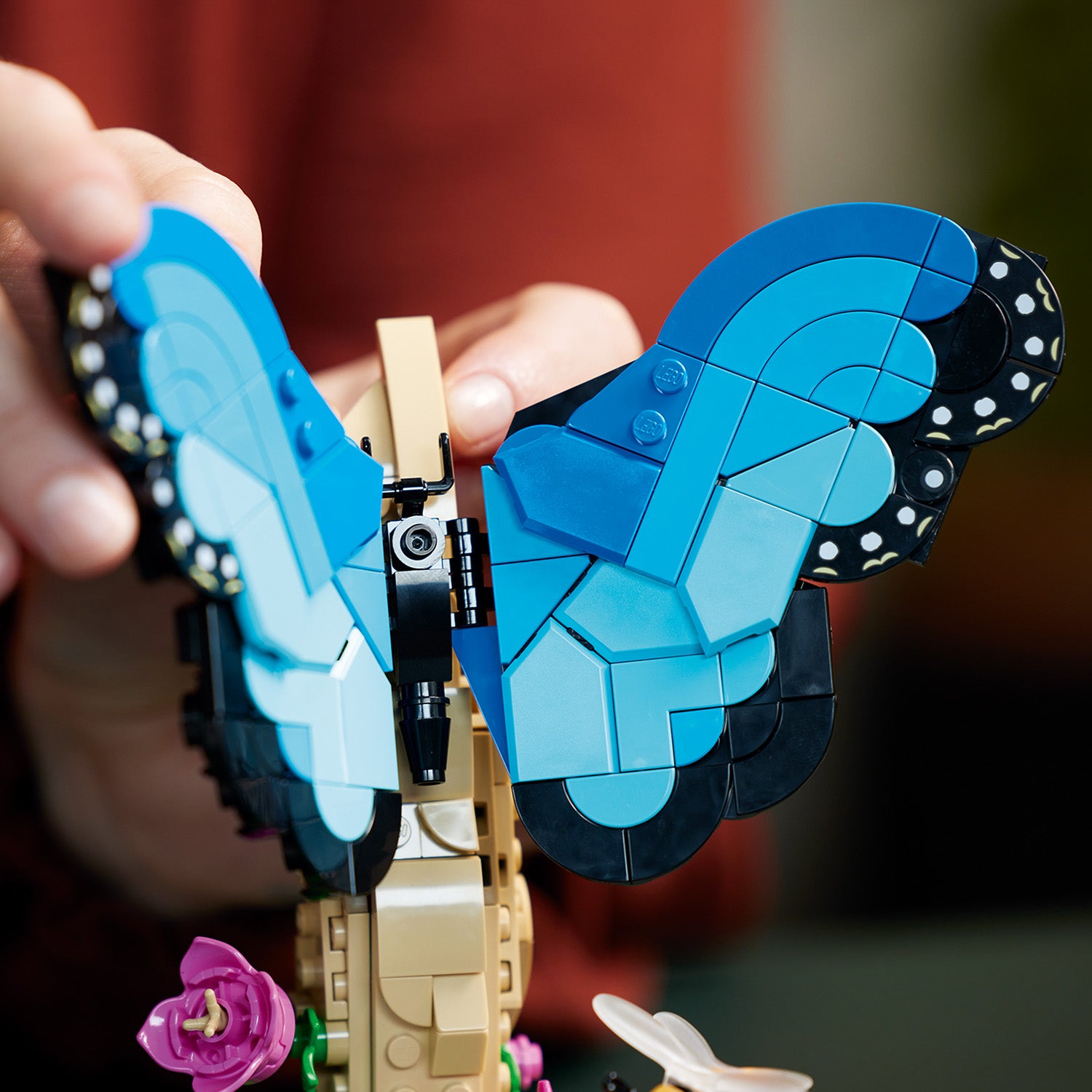
A striking display of colour: the wonderful animal and insect collection
READ MORE -
Extensive history of LEGO StarWars Republic Gunship sets
READ MORE -

The 10 best Marvel gifts for adults
READ MORE -
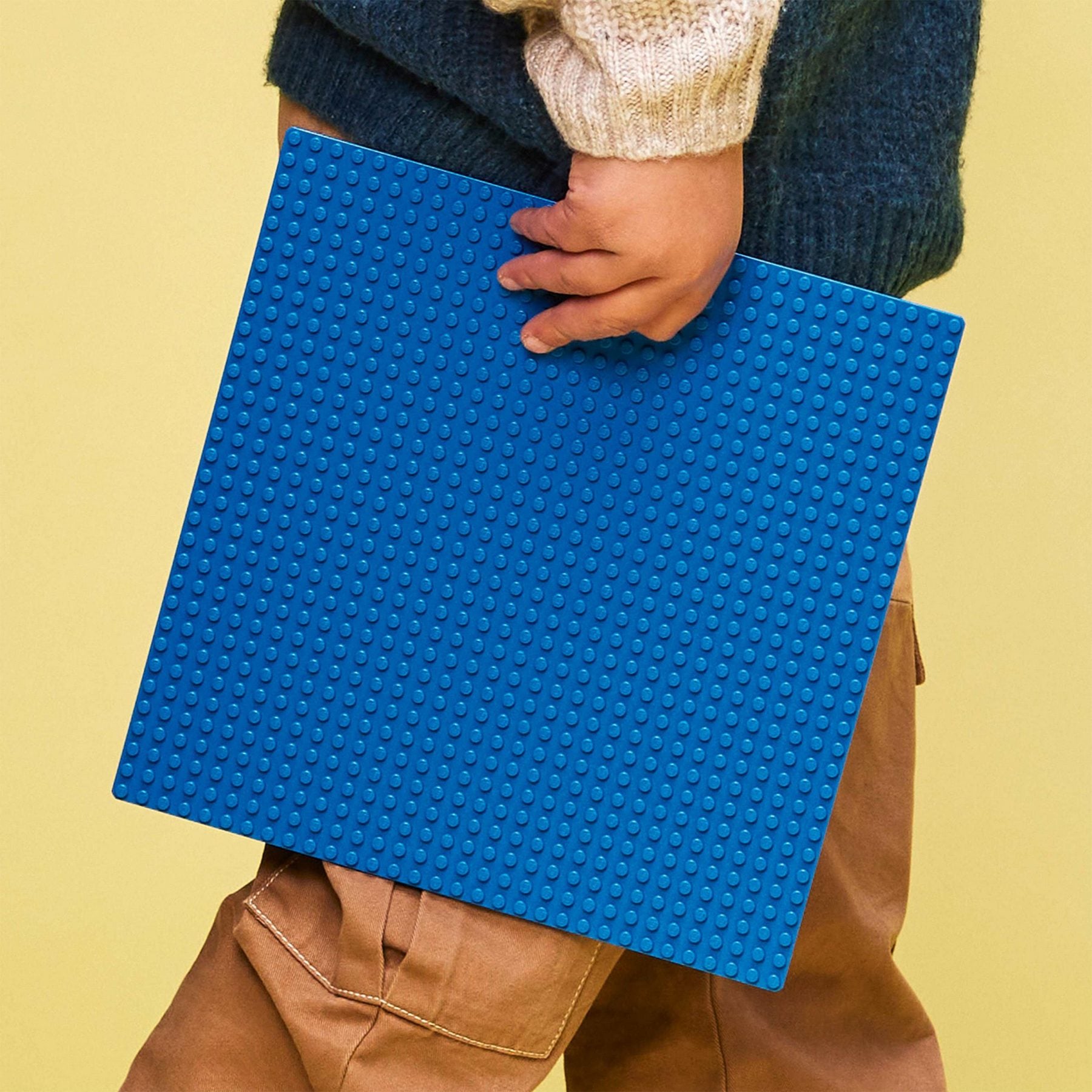
LEGO Building, ground and road plates
READ MORE -

Build with the 7 nicest excavators and trucks from LEGO
READ MORE -
The coolest trains from LEGO
READ MORE -
Bath toys from LEGO
READ MORE -
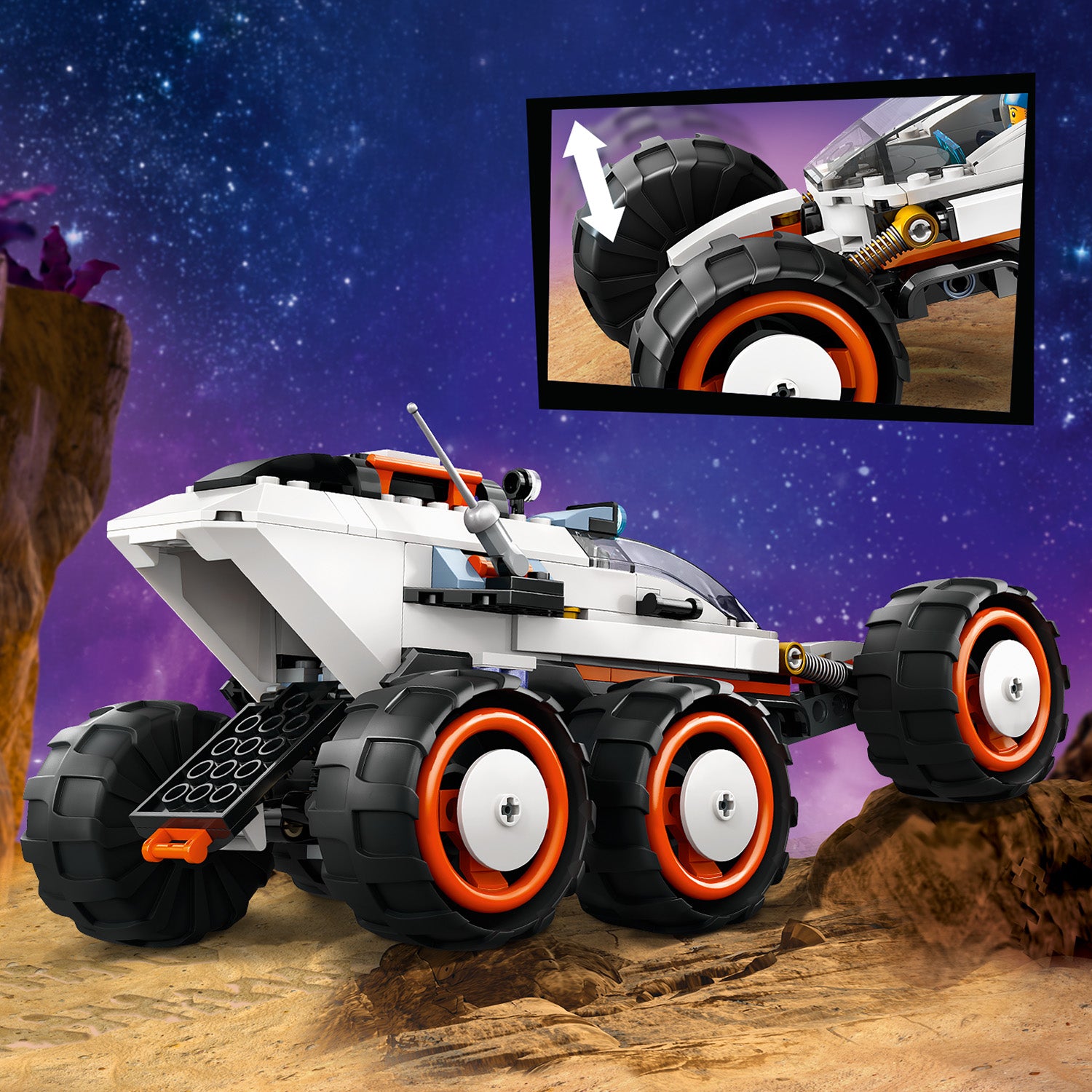
LEGO Space... the most beautiful sets
READ MORE -

LEGO Adults Welcome Entertainment
READ MORE
LATEST LEGO SETS
-
LEGO 3-in-1 dieren op wielen 10448 DUPLO
Regular price €29,99 EURRegular price€34,99 EURSale price €29,99 EURSale -
LEGO Hopsy's kasteelspel 10450 DUPLO
Regular price €33,99 EURRegular price€39,99 EURSale price €33,99 EURSale -
LEGO 3-in-1 dinosaurussen op wielen 10451 DUPLO
Regular price €59,99 EURRegular price€69,99 EURSale price €59,99 EURSale -
LEGO McQueens bezoek aan Docs garage 10456 DUPLO
Regular price €25,99 EURRegular price€29,99 EURSale price €25,99 EURSale -
LEGO De tuin en kas van Opa Big 10461 Peppa Pig
Regular price €67,99 EURRegular price€79,99 EURSale price €67,99 EURSale -
LEGO De pikhouweelmijn 21277 Minecraft
Regular price €46,99 EURRegular price -
LEGO De Enderman toren 21279 Minecraft
Regular price €84,99 EURRegular price€99,99 EURSale price €84,99 EURSale -
LEGO Aston Martin Valkyrie 42208 Technic
Regular price €53,99 EURRegular price -
LEGO Minnie's huisdierenhotel 43274 Disney
Regular price €33,99 EURRegular price€39,99 EURSale price €33,99 EURSale -
LEGO Toy Story feesttrein en RC auto 43264 Disney
Regular price €33,99 EURRegular price -
LEGO Centraal Station 60469 City
Regular price €76,99 EURRegular price€89,99 EURSale price €76,99 EURSale -
LEGO Arctic Explorer Polar Express Trein 60470 City
Regular price €169,99 EURRegular price€199,99 EURSale price €169,99 EURSale -
LEGO Nachtmerrie haaienonderzeeër 71500 Dreamzzz
Regular price €125,99 EURRegular price€139,99 EURSale price €125,99 EURSale -
LEGO Arins Spinjitzu strijdmecha 71839 Ninjago
Regular price €17,99 EURRegular price -
LEGO Rontu de Meesterdraak 71842 Ninjago
Regular price €39,99 EURRegular price€44,99 EURSale price €39,99 EURSale -
LEGO Ninja strijdvoertuig 71844 Ninjago
Regular price €76,99 EURRegular price -
LEGO De vuurriddermecha 71846 Ninjago (Pre-Order: juni)
Regular price €101,99 EURRegular price -
LEGO Het StarWars Logo 75407 StarWars
Regular price €59,99 EURRegular price -
LEGO Plo Koons Jedi Starfighter™ microfighter 75400 StarWars
Regular price €12,74 EURRegular price€14,99 EURSale price €12,74 EURSale -
LEGO 77241 (Pre-Order: March 2025)
Regular price €25,99 EURRegular price€29,99 EURSale price €25,99 EURSale -
LEGO 77241 (Pre-Order: March 2025)
Regular price €25,99 EURRegular price -
LEGO 77241 (Pre-Order: March 2025)
Regular price €42,99 EURRegular price€49,99 EURSale price €42,99 EURSale -
LEGO 77241 (Pre-Order: March 2025)
Regular price €76,99 EURRegular price€89,99 EURSale price €76,99 EURSale -
LEGO 77241 (Pre-Order: March 2025)
Regular price €84,99 EURRegular price€99,99 EURSale price €84,99 EURSale -
LEGO 77241 (Pre-Order: March 2025)
Regular price €212,99 EURRegular price€249,99 EURSale price €212,99 EURSale
SELECTED FOR YOU
-
LEGO 21062 (Pre-Order: March 2025)
Regular price €135,99 EURRegular price -
LEGO Pyramid of Giza 21058 Architecture
Regular price €118,99 EURRegular price -
LEGO Build your own Architecture buildings with this set Studio 21050 Architecture
Regular price €449,99 EURRegular price -
LEGO The New York Skyline 21028 Architecture
Regular price €42,99 EURRegular price -
LEGO Statue of Liberty 21042 Architecture
Regular price €84,99 EURRegular price -
LEGO Trafalgar Square London 21045 Architecture
Regular price €99,99 EURRegular price -
LEGO New York Postcard 40519 Creator
Regular price €17,99 EURRegular price -
LEGO Himeji Castle 21060 Architecture
Regular price €135,99 EURRegular price€159,99 EURSale price €135,99 EURSale -
LEGO Slot Neuschwanstein 21063 Architecture
Regular price €243,99 EURRegular price -
LEGO Notre-Dame Cathedral 21061 Architecture
Regular price €195,99 EURRegular price
-

LEGO Technic
Unleash your engineering skills with the LEGO Technic sets! Build realistic vehicles...
-

LEGO Friends
Experience friendship and adventure with LEGO Friends sets! Explore Heartlake City with...









